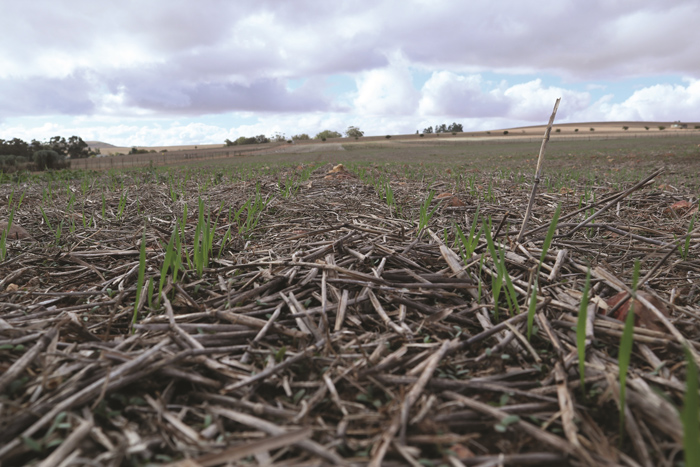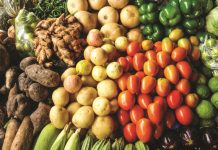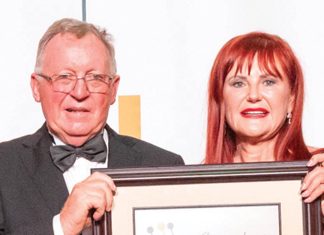Conservation Agriculture Western Cape (CAWC) celebrated the 10th anniversary of progress at the 2022 Jack Human Week of the Landbouweekblad Conservation Agriculture Conference. Dr Johann Strauss from Elsenburg (Western Cape Department of Agriculture) and Amelia Genis and Jan Bezuidenhout of Landbouweekblad and www.landbou.com respectively initiated this annual forum for scientist and producer collaboration.
‘It all started when I returned from South America in 2011 where we were introduced to the local conservation agriculture association and the pioneering work related to minimum till. I reported to the department about our experience and after viewing the feedback, our media partners proposed an annual event where scientists and producers would share research and experience,’ said Dr Strauss.
Supporting the future
At first, the hosting of international scientists and producers at the conference were made possible by the South African Winter Cereal Trust. ‘Nowadays the South African Winter Cereal Industry Trust (SAWCIT) in collaboration with various input suppliers and Landbouweekblad as our media partner are enabling us,’ added Dr Strauss.
The current chairperson of CAWC, MG Lötter, confirmed that the time and money invested to date into the long-term ecological and biodiversity impact of conservation practices compared to conventional practices were starting to pay off in direct savings on input supplies. ‘It is, however, important that progress benefitting nature, in the long run, should also benefit producers financially to be sustainable and profitable food producers,’ he told SA Graan/Grain.
Today healthy soil biodiversity, sufficient soil organic carbon and nitrogen levels, zero or minimum tillage, cover crops and livestock integration seem to be key to optimising soil microbial activity and soil health for profitable regenerative farming. However, most essential in sustainable and profitable regenerative grain production remains the design and implementation of an integrated strategy over the long term.
A long way
The first meeting of CAWC was held eleven years ago with about 70 people interested in conservation practices. A committee was elected to organise the first conference in Strand in 2012. Rolf Derpsch, a researcher and international consultant based in Asunción, Paraguay, was the first international scientist to visit and share his findings, while also listening to the experiences of South African producers.
Derpsch has witnessed and played a significant part in the development of no-till farming in South America, with his work spanning four decades. He continues to influence people in many corners of the world. He said no-tillage and minimum tillage have been used since ancient times by the so-called ‘primitive cultures’, simply because man did not have the muscle force to till any significant area of land to a significant depth by hand.
Progress and vision
At the 2022 conference Prof Stuart Grandy, a specialist in soil biogeochemistry and fertility and codirector of the Centre of Soil Biogeochemistry and Microbial Ecology at the University of New Hampshire in the USA, illustrated the importance of an active, high-quality soil microbial community in grain fields to secure how much crop residue becomes organic matter.
He encouraged producers to optimise year-round root systems, especially those of nitrogen-generating cover crops in the soil.
‘We confirmed that soil organic matter is optimally produced by microbial cells themselves when decomposed crop residue moves through microbes to produce new organic matter. After feeding laboratory microbes with glucose in a study by one of my students, Cynthia Kallenbach, we now know that organic soil matter arises from microbic activity. The microbes need nutrition to be able to develop soil organic matter through their physiology. The amount of soil organic matter developed is directly related to microbial growth efficiency and the presence of fungi in these systems.’
30 years in retrospect
Dr Chloe MacLaren, plant ecologist at Rothamsted Research in the United Kingdom, shared the progress of the Global Long Term Agriculture Research Network over the past three decades. The data in the study were derived from more than 25 000 yields globally, including South African and the Western Cape research at Langgewens research farm. Yields in the study included maize, wheat, oats, barley, potatoes and sugar beet. Different practices in different combinations, in different regions and with different crops have been compared.
Focussed on the impact of ecological intensification (EI) through regenerative conservation agriculture practices promoting ecological functions, Dr MacLaren said producers should start with ecological practices and then determine which and how many inputs were required to balance the ecological system most effectively, rather than kicking off with high-input farming models, trying to adapt later.
‘EI should be regarded as a pathway to sustainability which may assist to produce more food with less land and/or chemicals, fertiliser and energy inputs without compromising on yield performance,’ she concluded.




















